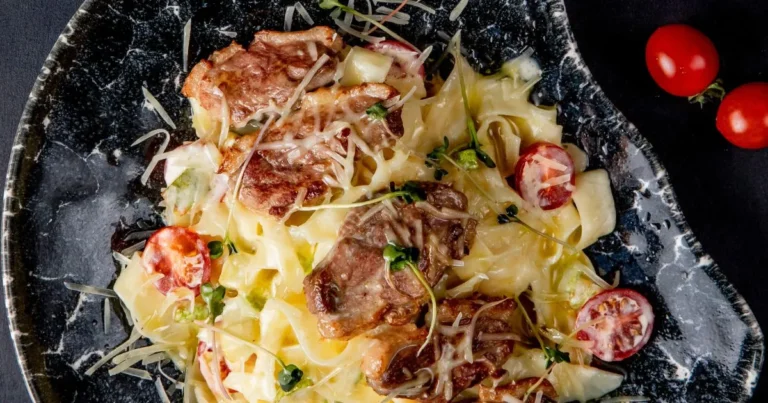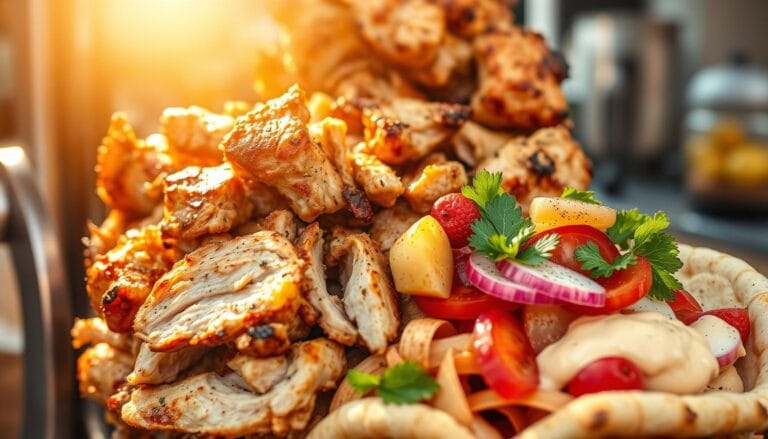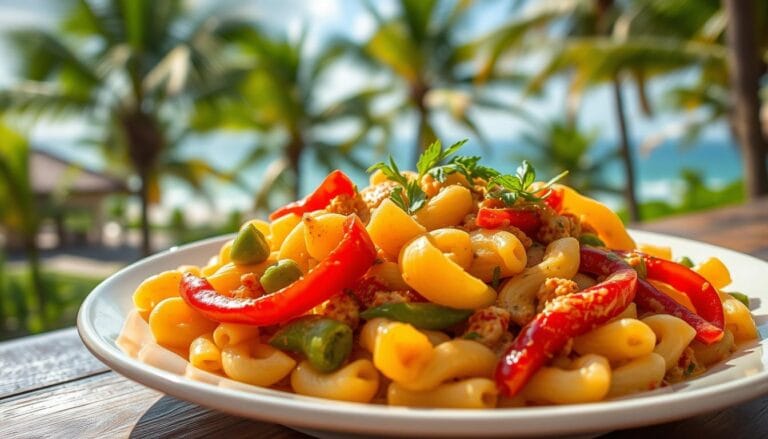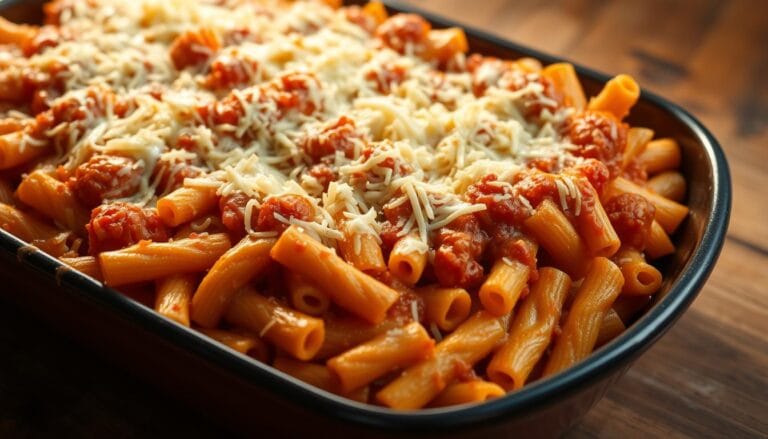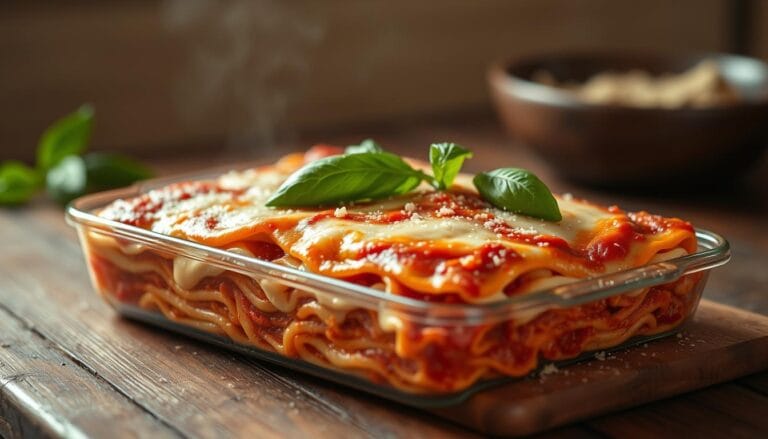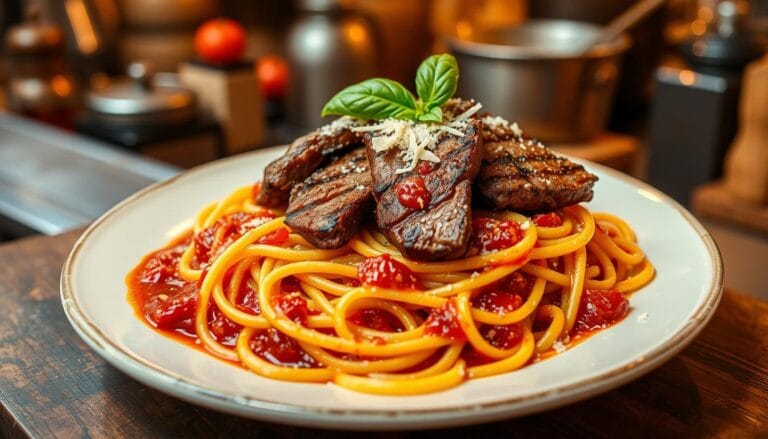Authentic Turkish Pasta: Simple & Flavorful
Ever walked into a kitchen and felt a dish’s warmth wrap around you like a familiar embrace? That’s the magic of Turkish pasta—a comfort food rooted in centuries of tradition yet adaptable to any home cook’s creativity. Its humble ingredients, like flour and water, transform into delicate yufka or hearty içli kömezik, proving that greatness often lies in simplicity. This turkish pasta recipe isn’t just a meal; it’s a bridge to a culture where every bite tells a story.
Imagine a plate piled with golden strands of triger pasta, drenched in tangy yogurt sauce and sprinkled with sumac. That’s the taste of Turkey’s heart, now reaching kitchens worldwide. Whether you’re recreating a family memory or exploring new flavors, this guide unlocks the secrets behind why turkish pasta recipe trends are sweeping global tables.
Table of Contents
Key Takeaways
- Turkish pasta blends rustic tradition with bold, herb-forward flavors.
- Its simplicity makes it ideal for both beginners and seasoned cooks.
- Varieties like yufka and triger showcase Turkey’s culinary diversity.
- The turkish pasta recipe boom highlights its global appeal.
- This guide covers history, techniques, and must-try sauce pairings.
What Is Turkish Pasta? An Introduction to Turkey’s Beloved Carbs
Exploring Turkish pasta is more than cooking—it’s a dive into history. It’s not just a meal; it’s a big part of Turkish life. It’s enjoyed at family dinners and big celebrations.
Origins and Cultural Significance of Turkish Pasta
Turkish pasta has deep roots, going back before the Ottoman Empire. Unlike Italian pasta, Turkish pasta often uses buckwheat or cornmeal. This shows the local harvests.
Erişte, a hand-rolled noodle, and mantı, tiny dumplings with yogurt, are favorites. These dishes are more than food; they’re comfort, stories, and heritage.

How Turkish Pasta Differs from Italian Pasta
Italian pasta is all about wheat and long cooking times. Turkish pasta is quick to make and uses different flours. Shapes like tarhana (fermented dough) and isiş (ribbon-like noodles) show this difference.
Serving styles also vary. Turkish dishes often have bold spices, herbs, or meat sauces. This is different from Italian’s oil-based or cream sauces.
Popular Types of Turkish Pasta Dishes
- Erişte: Thin, hand-rolled noodles in soups or stews.
- Mantı: Mini dumplings topped with butter, mint, and sumac.
- Yufka: Flatbread-based pasta layered with meat or vegetables.
Each type has its own story. Whether it’s a warm winter dish or a street food hit. Learning about these dishes connects you to Turkey’s food culture.
Essential Ingredients for an Authentic Turkish Pasta Recipe
Mastering the turkish pasta recipe begins with the right ingredients. You need a flour mix of all-purpose and semolina for the dough’s texture. Seasonings like yogurt and butter are also key. Red pepper paste and sumac give it unique flavors, while herbs like dill and parsley add freshness.
- Flour Mix: Combine all-purpose flour with semolina for a springy, chewy base.
- Red Pepper Paste: Use turkish paste recipe staples like Urfa pepper paste for smoky heat.
- Yogurt & Butter: Adds creaminess to sauces and finishing touches.
- Herbs & Spices: Sumac, dill, and parsley balance richness and freshness.
Substitutions make it easier to find ingredients without losing flavor:
| Traditional | US Substitute |
|---|---|
| Semolina flour blend | Extra all-purpose flour |
| Urfa pepper paste | Smoked paprika + tomato paste |
| Sumac | Lemon zest + cumin |
“The right ingredients turn dough into tradition,” says Istanbul-based chef Zeynrek Turgut, stressing the importance of quality for authenticity.

Using quality ingredients ensures your turkish pasta recipe stays true to Turkey’s culinary traditions. Try these essentials to make dishes that feel like they’re from a Turkish kitchen.
The Viral Turkish Pasta Recipe by Anna Paul: What’s All the Buzz About?

Anna Paul’s turkish pasta recipe anna paul took the internet by storm. It’s known for its easy take on traditional cooking. So, why did this viral turkish pasta recipe catch the world’s attention?
Who is Anna Paul and Why Her Recipe Went Viral
Anna Paul is a food creator who makes complex dishes simple. She made Turkish pasta easy for home cooks. Her anna paul turkish pasta recipe is quick and tasty, with 12 million views on TikTok and Instagram.
Key Elements of Anna Paul’s Turkish Pasta Recipe
- Uses pantry staples like eggs, flour, and garlic instead of specialty items.
- Eliminates lengthy dough resting periods, ready in under 30 minutes.
- Focuses on vibrant toppings like cherry tomatoes and parsley for eye-catching plating.
| Aspect | Anna Paul’s Version | Traditional Methods |
|---|---|---|
| Ingredients | Everyday items | Regional specialty ingredients |
| Prep Time | 25 minutes | Hours of resting/shaping |
Social Media Reaction to the Recipe
“I’ve never made pasta from scratch—this recipe changed my life!” – @FoodieSue (TikTok)
People loved Anna’s viral turkish pasta recipe for making Turkish food easy. Some argued it’s not true to tradition, but others see it as a way to explore new flavors. Chefs like @IstanbulEats say it’s a good start to learning about Turkish cuisine.
Step-by-Step Guide to Making Traditional Turkish Pasta from Scratch
Learning to make turkish pasta recipe begins with the dough. Follow these steps to achieve authentic textures:
Preparing the Dough
- Mix 2 cups all-purpose flour with a pinch of salt in a bowl.
- Create a well, add 1 egg and ½ cup water. Gradually mix dry ingredients into the liquid.
- Knead the dough on a floured surface until it’s smooth—8–10 minutes. Use the “ear flick” test: stretch a small dough piece thin enough to see light through.
- Cover and rest the dough for 30 minutes to relax the gluten.
Shaping Techniques
Shape the dough into regional varieties:
- Erişte: Roll into thin ropes, then slice into spaghetti-like strands.
- Mantı: Layer dough sheets with filling, fold into triangles, then cut into tiny dumplings.
- Yufka: Roll dough paper-thin for layered baked dishes.
Cooking Methods
Boil pasta in salted water:
- Erişte cooks 5–7 minutes until tender but firm.
- Mantı simmers 2–3 minutes before straining.
Drain immediately and pair with sauces—never rinse! Overcooking makes pasta gummy.
Quick and Easy Turkish Pasta Recipe for Beginners
Want to make a Turkish pasta dish fast? Use store-bought pasta to save time. This recipe skips making dough but keeps the Turkish flavor with smart shortcuts.
Ingredients needed:
- 1 package store-bought pasta (any shape)
- 3 tbsp olive oil
- 1 jar sun-dried tomato pesto (or homemade sauce)
- 1/2 onion, diced
- Salt, red pepper flakes, and lemon zest to taste
Steps to prepare:
- Cook pasta as the package says. Drain and set aside.
- In a pan, sauté onion in olive oil until soft. Add pesto and stir until heated through.
- Combine sauce with pasta. Season with salt, red pepper flakes, and lemon zest. Serve warm.
| Ingredient | Store-Bought Substitute | Tip |
|---|---|---|
| Fresh tomatoes | Canned diced tomatoes | Drain excess liquid for thicker sauce |
| Homemade yogurt sauce | Labneh (strained yogurt) | Available in Middle Eastern groceries |
“Season with lemon to balance richness,” say chefs. Adjust spices to your preference.
Try adding grilled veggies or feta on top. For a spicy kick, add chili flakes. This recipe is flexible—use what you have. Always taste as you go to get it just right.
Flavorful Sauce and Topping Options for Your Turkish Pasta
Make your turkish pasta recipe more exciting with traditional sauces and toppings. Whether you’re following the viral turkish pasta recipe or trying new things, these additions will make every bite special.
Traditional Turkish Sauces and Their Ingredients
- Yogurt-Garlic Sauce: Mix strained yogurt with minced garlic, dill, and lemon juice. Pour it over warm pasta for a tangy taste.
- Brown Butter & Aleppo Pepper: Cook butter until it’s golden, then add crushed red pepper. Toss with pasta for a classic flavor.
- Tomato-Onion Sauce: Cook onions until they’re sweet, then blend with tomatoes and thyme. Simmer for a rich sauce.
Vegetarian and Meat-Based Topping Ideas
Choose from these toppings to customize your dish:
| Type | Vegetarian | Meat-Based |
|---|---|---|
| Option 1 | Caramelized onions + pine nuts | Spiced ground lamb |
| Option 2 | Roasted eggplant purée | Grilled chicken strips |
| Option 3 | Walnut & pomegranate molasses mix | Beef in tomato sauce |
Herb and Spice Combinations for Authentic Flavor
Enhance your dish with these unique seasonings:
- Sumac: Add a citrusy flavor with a sprinkle.
- Aleppo Pepper: Perfect for creamy or tomato sauces, adds a mild heat.
- Dried Mint: Essential for yogurt sauces and meat dishes.
“The key is balance: acidity, fat, and herbs work together—never overpowering the pasta.”
Adjust the spice to your taste, but keep the core ingredients true to tradition. Try these combinations to honor the past while making it your own.
Common Mistakes to Avoid When Making Turkish Pasta
Mastering the Anna Paul Turkish pasta recipe starts with knowing what to avoid. Let’s break down the most frequent errors and how to fix them.
Dough Problems and Solutions
- Over-kneaded dough: Overworking stretches gluten too much. Knead just until smooth—about 8–10 minutes.
- Incorrect hydration: Dough too dry? Add water 1 tsp at a time. Too sticky? Sprinkle with flour instead of dusting hands.
Cooking Pitfalls
- Under-salted water: Salt pasta water generously (1 tbsp per quart) for proper seasoning absorption.
- Overcooking: Test pasta 2 minutes before package instructions. Turkish pasta should stay slightly firm (al dente).
Seasoning Errors
| Mistake | Solution |
|---|---|
| Ignoring spice balance | Add red pepper flakes and sumac last to preserve freshness |
| Over-saucing | Follow ratios in the Anna Paul Turkish pasta recipe: 1 cup sauce per 12 oz pasta |
Many home cooks overseason with garlic or underuse yogurt-based sauces. Taste as you go, and compare your approach to trusted Anna Paul Turkish pasta recipe techniques.
Serving Suggestions and Pairings for Your Turkish Pasta Recipe
When you serve your Turkish pasta, think about Turkish traditions. Choose simple, fresh sides to balance the bold flavors. Start with crisp salads likelahana salatası(cabbage salad) orpatlıcan salatası(eggplant dip) for texture.
For a full meal, add small plates like stuffed grape leaves or roasted peppers. They go great with your pasta.
- Drink Pairings: Pair your turkish pasta recipe anna paul with cool ayran yogurt drink, Turkish tea, or rakı for adults. Red wine or rose water lemonade are good for those who don’t drink alcohol.
- Temperature Tips: Serve pasta warm, but let sauces cool a bit. This helps avoid overpowering the herbs.
- Seasonal Twists: Add roasted eggplant in fall or cucumber salads in summer. In winter, hearty lentil soups are perfect.
“A sprinkle of sumac and a side of olives can make any pasta dish better,” says Anna Paul in her famous recipe. “Mix richness with crisp, light sides.”
Present pasta in shallow bowls or ceramic plates, just like the Turks do. For a big gathering, start with meze platters, then pasta, and finish withbaklava. Anna Paul’s recipe makes 4-6 servings, perfect for parties.
Try these pairings to follow Turkish dining customs. Whether it’s a casual or formal setting, these tips help your dish show its cultural roots. From drinks to how you plate it, every detail is important in showing theturkish pasta recipe’s true spirit.
Conclusion: Embracing the Simplicity and Flavor of Authentic Turkish Pasta
Authentic Turkish pasta is all about simple yet bold flavors. It’s a mix of old traditions and new tastes. Anna Paul’s viral recipe shows how these dishes connect us all.
Learning to make Turkish pasta is easy. Use good ingredients like semolina flour and fresh herbs. Add your own twist with feta or sumac to make it yours.
Try different pasta shapes like istiklal or kekik. Even simple spaghetti can be amazing with the right sauce. Share your dishes online and use #TurkishPasta to connect with others.
Make Turkish pasta a regular part of your meals. Try quick sauces or use leftovers. Keep your pantry stocked with bulgur and red pepper flakes. Explore new recipes like ezogelin or karnıyarık.
Cooking Turkish pasta is always exciting. It’s a chance to try new things and share with your family. Remember, the best dishes come from respecting tradition and adding your own touch.


